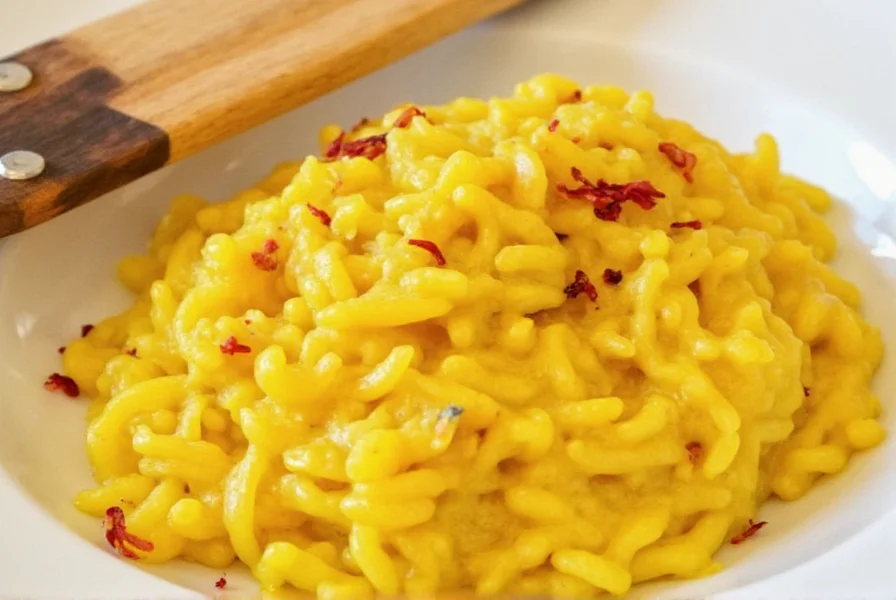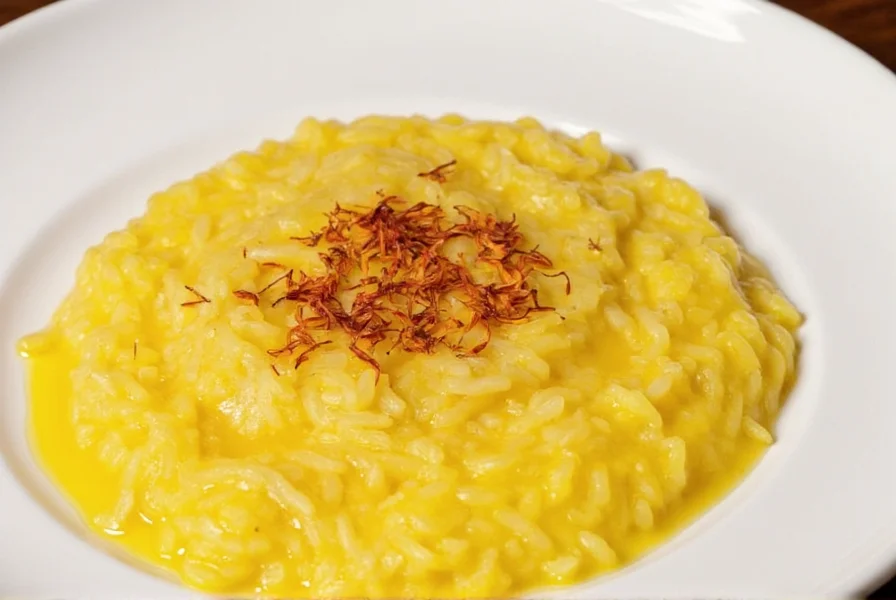Nothing elevates a simple risotto to restaurant-quality status quite like properly used saffron. This precious spice, harvested from the delicate crocus flower stigma, transforms ordinary rice into a luxurious dish with its signature golden hue and complex flavor profile. Yet many home cooks struggle with how much saffron for risotto and when to incorporate it for optimal results.
The Science Behind Saffron in Risotto
Saffron contains crocin (responsible for color), picrocrocin (for flavor), and safranal (for aroma). These compounds are water-soluble but require proper extraction. When you add dry saffron directly to hot rice, the intense heat can degrade these compounds, resulting in uneven color distribution and potential bitterness.
Research shows that steeping saffron in liquid between 140-160°F (60-70°C) for 15-20 minutes maximizes extraction of these compounds. Higher temperatures can degrade safranal, while lower temperatures won't extract enough crocin for that signature golden color.
Step-by-Step Saffron Preparation Guide
Follow this professional technique for perfect saffron infusion every time:
- Measure precisely: ¼ tsp powdered saffron or 15-30 threads per 4 servings
- Crush threads gently with mortar and pestle (or between fingers)
- Combine with ¼ cup warm broth or water (140-160°F)
- Cover and steep 15-20 minutes
- Add both liquid and saffron solids to risotto after toasting rice
This method ensures even distribution of color and flavor throughout your saffron risotto technique. The crushed threads continue releasing compounds during cooking, while the steeped liquid immediately begins coloring the rice.
Common Saffron Mistakes to Avoid
Many home cooks make these critical errors when using saffron in risotto:
| Mistake | Consequence | Solution |
|---|---|---|
| Adding dry saffron directly to rice | Uneven color, bitter spots | Always steep first in warm liquid |
| Using boiling liquid for steeping | Flavor degradation, less vibrant color | Use warm (140-160°F) liquid |
| Insufficient steeping time | Pale color, weak flavor | Allow 15-20 minutes minimum |
| Adding too early in cooking | Flavor dissipates during cooking | Add after rice is toasted, before first broth addition |
Troubleshooting Saffron Issues
Why isn't my risotto turning yellow? This usually indicates poor quality saffron or improper preparation. Genuine saffron should turn liquid bright yellow immediately when steeped. If your liquid remains pale, your saffron may be old or adulterated.
How to test saffron quality: Place a few threads in warm water. Authentic saffron will gradually turn the water deep yellow within minutes, while fake saffron (often made from marigold) produces an orange-red color almost immediately.
For the question of when to add saffron to risotto, timing is crucial. Add the steeped saffron mixture after you've toasted the rice but before adding the first ladle of broth. This allows the saffron to coat the rice grains directly, creating that beautiful golden color throughout rather than just in pockets.

Saffron Storage and Handling
Saffron loses potency when exposed to light, heat, and moisture. Store in an airtight container in a cool, dark place. Properly stored, saffron maintains quality for 1-2 years. Never store saffron in the refrigerator where moisture can degrade it.
For the best results with your saffron measurement for risotto, consider investing in a small digital scale. While teaspoons work, 0.1 grams of saffron per serving provides more consistent results than volume measurements, which can vary based on how tightly threads are packed.
Quality Considerations for Authentic Flavor
Not all saffron delivers the same results in risotto. Look for:
- Coupe or 'mancha' grade saffron (highest quality)
- Deep red threads with minimal yellow styles
- Packaged in opaque containers
- Origin from Iran, Spain, or Kashmir
Cheap saffron often contains filler threads or has been improperly dried, resulting in weaker color and flavor. While expensive, high-quality saffron goes further—meaning you'll use less for better results, making it more cost-effective in the long run for your proper saffron usage in Italian cooking.
Frequently Asked Questions
How much saffron should I use for one serving of risotto?
For a single serving of risotto (about 1 cup cooked), use 3-8 saffron threads or 1/16 teaspoon of powdered saffron. This provides the authentic golden color and distinctive flavor without overwhelming the dish or becoming bitter.
Can I substitute turmeric for saffron in risotto?
While turmeric provides similar yellow color, it lacks saffron's distinctive floral-honey flavor profile and can make risotto taste earthy and bitter. For authentic risotto alla Milanese, saffron is irreplaceable. Turmeric works only as a last-resort color substitute when saffron is unavailable.
Why does my saffron risotto turn orange instead of yellow?
Orange or red hues typically indicate either fake saffron (often dyed marigold) or excessive heat during preparation. Genuine saffron produces a golden-yellow color. If your risotto turns orange, your saffron may be adulterated, or you might be using boiling liquid which degrades the color compounds.
Should I rinse saffron before using it in risotto?
No, rinsing saffron wastes precious compounds. Instead, steep the threads directly in warm liquid to extract maximum color and flavor. Rinsing would remove the very compounds that give saffron its value in saffron risotto technique.
Can I use saffron powder instead of threads for risotto?
Yes, saffron powder works well and often provides more consistent results since it's already ground. Use ¼ the amount of powder compared to threads (e.g., ¼ tsp powder instead of 1 tsp threads). Powder dissolves more quickly but can be more prone to adulteration, so purchase from reputable sources.











 浙公网安备
33010002000092号
浙公网安备
33010002000092号 浙B2-20120091-4
浙B2-20120091-4